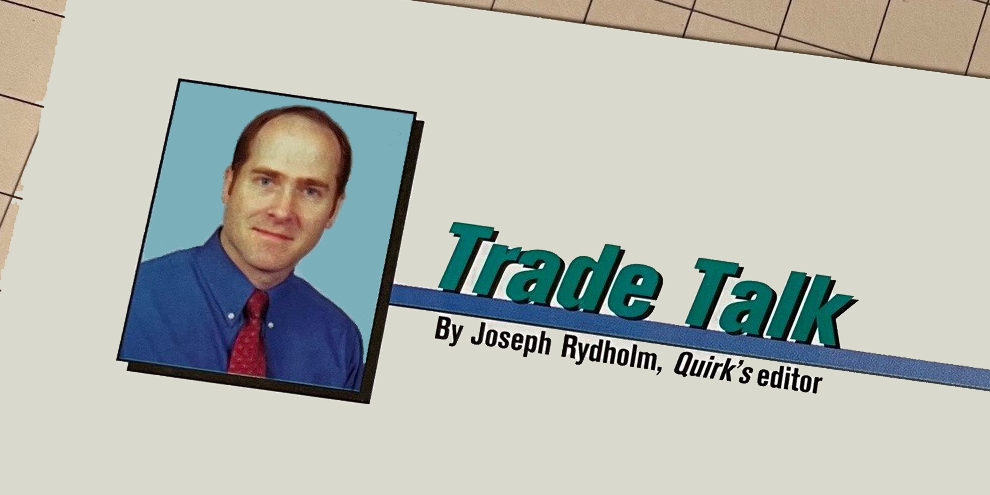I didn’t get to sit in on every presentation that I wanted to at the American Marketing Association’s annual research conference in September but here are some of the highlights from those I was able to attend.
- James Mendelsohn, director of marketing research at Capital One, gave a very interesting presentation on Capital One’s program to streamline and systematize its dealings with research vendors. Prior to its efforts, research managers were free to choose any supplier they wanted, which gave welcome freedom to the department but led the company to go from using three suppliers in 1999 to 108 in 2003. Following the introduction of the Vendor Management Program, the company has eliminated RFPs and instead assigns work directly to suppliers. In some cases, such as projects employing standard methodologies, if the Capital One research department is only a middleman between a research supplier and an in-house client, the MR department steps out of the way. And suppliers have been challenged to work together to maximize value for Capital One as a client. So far, it sounds like things have gone well: MR department morale didn’t drop precipitously; research staff can now devote more time to analysis rather than vendor management; and project turnaround times are faster.
- In his talk on television network branding in a digital environment, Artie Bulgrin, senior vice president of research and sales development at ESPN, Inc. debunked some of the perceptions that arose in the early days of the Internet. For example, the experts said that people would spend less time with their TVs and more time with the Internet. Wrong, Bulgrin said: average TV viewing has increased 14 percent in the past 10 years; 50 percent of the average person’s daily media time is spent with TV - only 11 percent of that time is spent online. He also outlined four ways that TV brands can develop strong relationships with their viewers: by consistently demonstrating that they care about their viewers and know what they are looking for; by being unique and different (indeed, Bulgrin said that research paved the way for ESPN’s decision to launch its original entertainment division, through which it has developed sports-related movies such as The Junction Boys that are broadcast exclusively on ESPN) and projecting a personality that viewers can recognize; by establishing a brand environment, during and outside of program minutes, that is relevant and talks to that viewer; and by entertaining the audience.
- I found out from J. Walker Smith of Yankelovich Partners that we’re not “cocooning” anymore, we’re “hiving.” Rather than retreating into our homes and shutting out the rest of the world, Smith said we’re now interested in making our homes into safe settings that are abuzz with activity and engagement. People are still looking for comfort in their lives, even two years removed from 9/11, and they get it by “connecting” with other people. That togetherness can be forged in person, by playing board games in our rec rooms or hosting backyard parties, or by being always-available to friends and family through our cell phones and e-mail accounts. The hiving phenomenon is also fueling the popularity of shows like Trading Spaces and networks like HGTV, which make home renovation and decoration into fun, collaborative activities.
- MetLife’s Neil Marcus and Data Development Corporation’s Peggy Lebenson detailed the success of their companies’ excellent client-supplier relationship. Each year MetLife uses Data Development Corporation (DDC) to conduct phone interviews with thousands of customers for its account management study (achieving a whopping 65-70 percent cooperation rate). MetLife rightly views the interviewers as extensions of its company, so prior to the annual kickoff of the study, Marcus visits DDC’s offices and personally briefs the interviewers, explaining to them how the research is used and stressing the value and importance of their role in the process. Interviewers are also eligible to receive bonuses at the end of the year from MetLife if no complaints are received from MetLife customers regarding the interview process (in the seven years of the study, only one complaint has been received).
Marcus had three excellent questions for client companies who are using an interviewing firm to survey customers: Do you know who the interviewers are? Have you listened to them speak to your customers? Do you reward them for a good job and remove those who aren’t up to your standards?
As Marcus pointed out, you are in effect leaving these interviewers alone with your customers, so if you’ve never asked yourself those questions, now might be a good time to do so.
